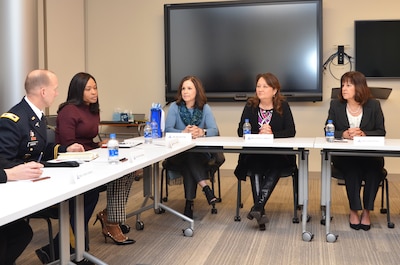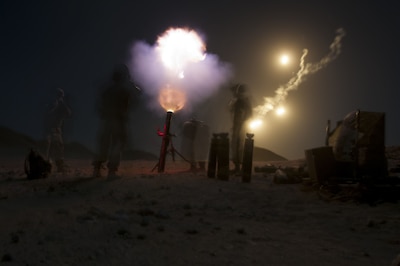By Mikaela Cade, Carl R. Darnall Army Medical Center
FORT HOOD, Texas, Feb. 2, 2018 — Speaking with Second Lady Karen
Pence during her Jan. 29 visit to the Intrepid Spirit Center here, it's
apparent that championing art therapy is not just an initiative, but a passion.
Pence's passion is driven by the human and scientific
evidence of art therapy's healing properties.
"People think its arts and crafts, but that's not what
art therapy is," she said. "It is a mental health profession where a
trained therapist uses art as their medium to help guide someone through the
healing process."
Power of Art Therapy
Pence first learned of the power of art therapy to help
people heal a decade ago when she observed an art therapy program for kids with
cancer. Since then, the second lady's number one goal is to raise awareness of
the unique form of therapy and how it benefits everyone from those battling
cancer to those dealing with the invisible wounds of war.
Pence has partnered with the Creative Forces Military
Healing Arts Network, a joint pro-arts initiative amongst the National
Endowment for the Arts, the Defense Department and Veterans Affairs, which put
creative arts therapies at the core of patient-centered care at Fort Hood and
10 other military medical facilities across the country.
As she travels across the nation advocating for art therapy,
Pence said she is excited to meet active-duty soldiers and veterans who have
embraced the therapy method and are thriving.
Her trip to Fort Hood included a tour of the Intrepid Spirit
Center, an orientation to its Healing Arts program and a roundtable discussion
with community leaders about the integration of art therapy in caring for
service members.
"I hear a lot of stories about soldiers who initially
don't want to go into art therapy sessions because it doesn't seem like the
strong or tough thing to do," Pence said. "But then I hear them talk
about the tremendous relief and success they experience after art therapy. One
soldier confided in me that he doesn't go to that dark place anymore. Hearing
success stories like that is powerful. It shows that art therapy saves lives."
The idea of patients being apprehensive, but quickly
becoming appreciative is all too familiar to the team at the Intrepid Spirit
Center.
Effective Treatments
"Art and music therapy are effective treatment
modalities that enhance the total treatment regimen to help the recovery
process," said Dr. Scot Engel, a clinical psychologist and director of the
Intrepid Spirit. "When interweaving creative art therapies into our
patient care plans we are improving clinical outcome for our warriors."
Peter Buotte, healing arts and therapy coordinator, believes
art therapy benefits the patient as it fosters a safe, supportive environment
for therapeutic self-expression.
"At its deepest, the art therapy process can go beyond
the verbal -- and even beyond the recognizable image -- in order to emotionally
engage with the patient/client," Buotte said.
Art and music therapy have been integral components of the
Intrepid Spirit Center's multi-disciplinary approach to restoring service
member's medical readiness for more than a year. The center is one component of
the comprehensive system of behavioral health care offered for service members
and their families at the Carl R. Darnall Army Medical Center here.
Before visiting Fort Hood, Mrs. Pence shared her message of art
therapy significance with more than 140 local community arts professionals and
military behavioral health care specialists at the Texas Creative Forces Arts
and Military Conference held in Killeen, Texas. The conference aimed to support
and grow collaborative relationships between local artists, arts organizations
and military populations to help service members reintegrate after deployment.










